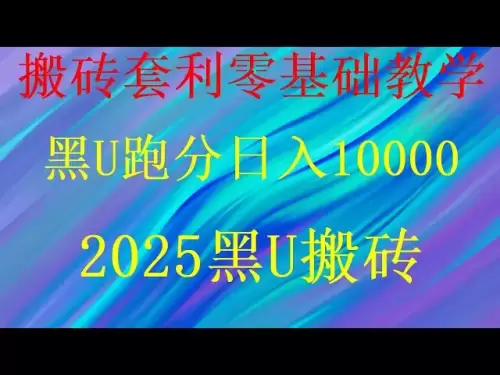 |
|
 |
|
 |
|
 |
|
 |
|
 |
|
 |
|
 |
|
 |
|
 |
|
 |
|
 |
|
 |
|
 |
|
 |
|
Cryptocurrency News Articles
Bitcoin Solaris Employs a Dual-Consensus Protocol to Secure Its Ledger and Validate Transactions
May 16, 2025 at 06:00 pm
Bitcoin Solaris addresses common limitations inherited from standard Proof-of-Stake (PoS) mechanisms by combining both PoS and Proof-of-Capacity (PoC)

Toncoin employs a standard Proof-of-Stake (PoS) mechanism, using validator elections and staking weight to secure its ledger and validate transactions. While efficient, this approach inherits common limitations: validator concentration, latency under load, and vulnerability to stake-based governance manipulation. Bitcoin Solaris addresses these structural issues with a dual-consensus protocol, combining both Proof-of-Stake (PoS) and Proof-of-Capacity (PoC) on one layer, while deploying Proof-of-History (PoH) and Proof-of-Time (PoT) on a second execution layer.
This split-layer design enhances decentralization, improves finality speed, and ensures security across both computation and state validation. Rather than rely on stake alone, Bitcoin Solaris incorporates hardware-agnostic storage commitments and cryptographic time-ordering — setting a new standard for blockchain performance within the advanced tech category of protocols built for scalability, resilience, and automation.
Consensus Across Layers: Structure That Scales
Bitcoin Solaris’s dual-layer architecture separates validation from execution:
Toncoin, by contrast, places all consensus responsibilities on a single PoS layer, which can lead to slower consensus under network stress and fewer defensive mechanisms against collusion. Bitcoin Solaris’s model delivers not only higher throughput but also finer-grained consensus conditions for automated applications, dynamic state changes, and cross-layer synchronization — hallmarks of modern advanced tech blockchains.
Security Architecture Built for Quantum Resilience and Validator Integrity
Unlike Toncoin’s single-tier validation logic, Bitcoin Solaris was engineered with a layered security model from the start. The network supports quantum-resistant cryptographic primitives, ensuring that validator keys and state data remain safe even under future computing threats. Consensus finality is cross-validated using Merkle-DAG lineage, allowing fast dispute resolution without central arbitration.
Security audits were conducted across protocol layers and cryptographic implementations:
This layered audit and encryption model is tailored for advanced tech deployments — where uptime, validator diversity, and data security cannot be compromised.
In a recent breakdown, Crypto Chino compared Bitcoin Solaris’s multi-consensus framework to Toncoin’s PoS model. The analysis covers validator incentives, network finality under load, and how Solaris’s architecture improves scalability for high-automation environments.
Presale Phase 3: Early Access to Dual-Layer Consensus and Full Protocol Functionality
Bitcoin Solaris is currently in Presale Phase 3, with BTC-S tokens priced at $3 USDT. This phase offers access ahead of centralized exchange listings and full validator onboarding, giving participants an opportunity to engage with the ecosystem before mobile mining and dual-layer applications go fully live.
Of the 21 million BTC-S total supply, 4.2 million tokens (20%) are allocated for presale. There is no inflation, and token distribution is tightly bound to mining output and validator performance metrics. Early buyers benefit from protocol-level priority in staking and infrastructure roles — ensuring both capital exposure and structural participation as the network scales.
Toncoin’s PoS consensus was a necessary evolution — but Bitcoin Solaris marks a new paradigm. With dual-layer validation, quantum-ready encryption, and integrated PoC economics, it removes single-point reliance on stake and delivers a more secure, efficient, and decentralized alternative.
As Presale Phase 3 continues and advanced tech use cases prepare for deployment, Bitcoin Solaris is proving that next-generation consensus is all about structural resilience.
Website: https://bitcoinsolaris.com/ X: https://x.com/BitcoinSolaris Telegram: https://t.me/Bitcoinsolarisoutput: Toncoin, a standard Proof-of-Stake (PoS) chain, has been a subject of discussion in the crypto community. Recently, Crypto Chino provided an analysis comparing Toncoin’s single-tier PoS with Bitcoin Solaris’s multi-consensus architecture, highlighting the pros and cons of each approach.
The analysis focused on three main aspects:
* Validator incentives and diversity: PoS chains typically concentrate power in the hands of a few large validators, while smaller nodes have limited influence. This can lead to vulnerabilities and a less decentralized ecosystem.
* Network finality under extreme load: When a blockchain is saturated with transactions, PoS chains can experience slower block times and increased latency, impacting user experience and application performance.
* operability for high-automation environments: PoS chains are designed for general-purpose use cases, while protocols like Bitcoin Solaris are built with a focus on advanced tech applications that require seamless integration, minimal downtime, and high levels of security.
The analysis concluded that Bitcoin Solaris offers several advantages over Toncoin, especially for the demanding requirements of Web3 2.0 and the metaverse.
The table summarizes the key differences between the two protocols:
The analysis also touched upon the role of presale in providing early access to Bitcoin Solaris, allowing participants to contribute to the ecosystem before mobile mining and dual-layer applications go fully live.
Overall,
Disclaimer:info@kdj.com
The information provided is not trading advice. kdj.com does not assume any responsibility for any investments made based on the information provided in this article. Cryptocurrencies are highly volatile and it is highly recommended that you invest with caution after thorough research!
If you believe that the content used on this website infringes your copyright, please contact us immediately (info@kdj.com) and we will delete it promptly.
-

-

-

-

-

-

-

-

- An ugly (or is it cute?) green lizard named Glonk is showing how pump.fun’s once absolute dominance of the Solana memecoin trade is slipping.
- May 17, 2025 at 03:25 am
- As recently as April 24, pump.fun's market share of tokens deployed was almost 99%. This week, that dominance slipped down to near 60% as competing launchpads continue to gain traction.
-





























































